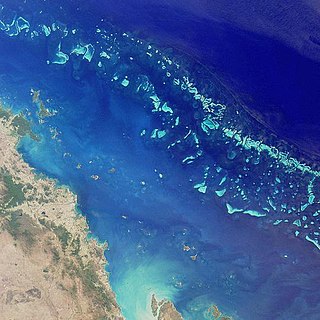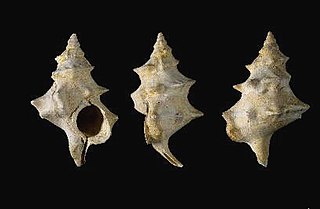
The Great Barrier Reef is the world's largest coral reef system composed of over 2,900 individual reefs and 900 islands stretching for over 2,300 kilometres (1,400 mi) over an area of approximately 344,400 square kilometres (133,000 sq mi). The reef is located in the Coral Sea, off the coast of Queensland, Australia. The Great Barrier Reef can be seen from outer space and is the world's biggest single structure made by living organisms. This reef structure is composed of and built by billions of tiny organisms, known as coral polyps. It supports a wide diversity of life and was selected as a World Heritage Site in 1981. CNN labelled it one of the seven natural wonders of the world. The Queensland National Trust named it a state icon of Queensland.

The gastropods, more commonly known as snails and slugs, belong to a large taxonomic class of invertebrates within the phylum Mollusca, called Gastropoda. This class comprises snails and slugs from saltwater, from freshwater, and from the land. There are many thousands of species of sea snails and slugs, as well as freshwater snails, freshwater limpets, and land snails and slugs.

Turritella is a genus of medium-sized sea snails with an operculum, marine gastropod mollusks in the family Turritellidae.
Cymatiidae is a family of large sea snails in the superfamily Tonnoidea and the order Littorinimorpha.
The World Register of Marine Species (WoRMS) is a taxonomic database that aims to provide an authoritative and comprehensive list of names of marine organisms.
Microvoluta is a genus of very small sea snails, marine gastropod molluscs in the family Volutomitridae.

Cymatium is a genus of small to large predatory sea snails, marine gastropod mollusks in the family Cymatiidae.

Austrotriton is a genus of medium-sized sea snails, a marine gastropod mollusc in the family Cymatiidae.

Freshwater snails are gastropod mollusks which live in fresh water. There are many different families. They are found throughout the world in various habitats, ranging from ephemeral pools to the largest lakes, and from small seeps and springs to major rivers. The great majority of freshwater gastropods have a shell, with very few exceptions. Some groups of snails that live in freshwater respire using gills, whereas other groups need to reach the surface to breathe air. In addition, some are amphibious and have both gills and a lung. Most feed on algae, but many are detritivors and some are filter feeders.
Isodaphne garrardi is a species of sea snail, a marine gastropod mollusk in the family Raphitomidae.
Admetula garrardi is a species of sea snail, a marine gastropod mollusk in the family Cancellariidae, the nutmeg snails.
Admetula is a genus of sea snails, marine gastropod mollusks in the family Cancellariidae, the nutmeg snails.

Isodaphne is a genus of sea snails, marine gastropod mollusks in the family Raphitomidae.

Vexitomina is a genus of sea snails, marine gastropod mollusks in the family Horaiclavidae.
Microvoluta garrardi is a species of sea snail, a marine gastropod mollusk in the family Volutomitridae.
Austrotriton bassi is a species of predatory sea snail, a marine gastropod mollusk in the family Cymatiidae.
Austrotriton epitrema is a species of predatory sea snail, a marine gastropod mollusk in the family Cymatiidae.
Austrotriton petulans is a species of predatory sea snail, a marine gastropod mollusk in the family Cymatiidae.
Austrotriton subdistortus is a species of predatory sea snail, a marine gastropod mollusk in the family Cymatiidae.
Corallimorphus niwa is a species of corals in the genus Corallimorphus. It was classified by Fautin in 2011. Corallimorphus niwa lives in marine habitats.








